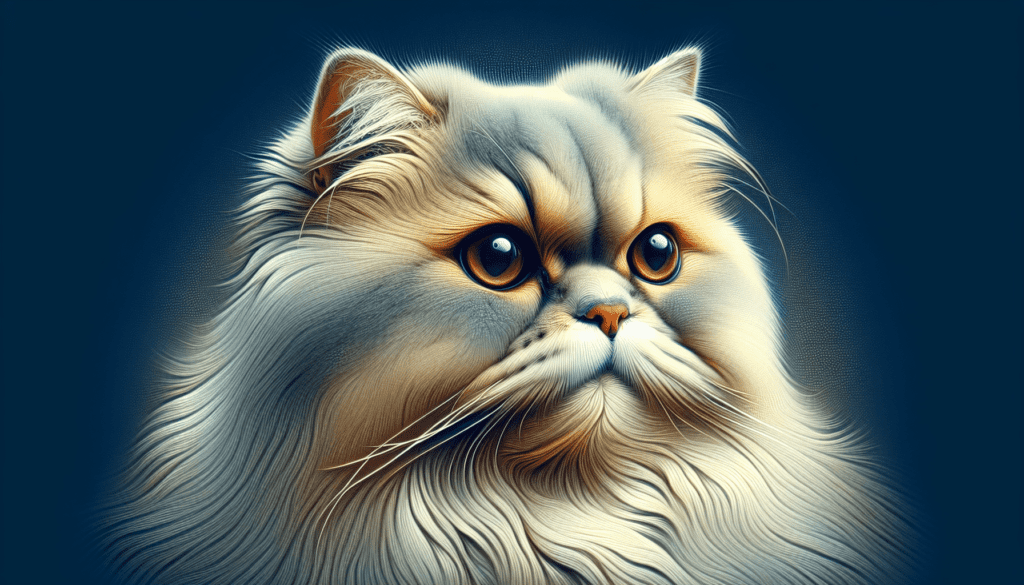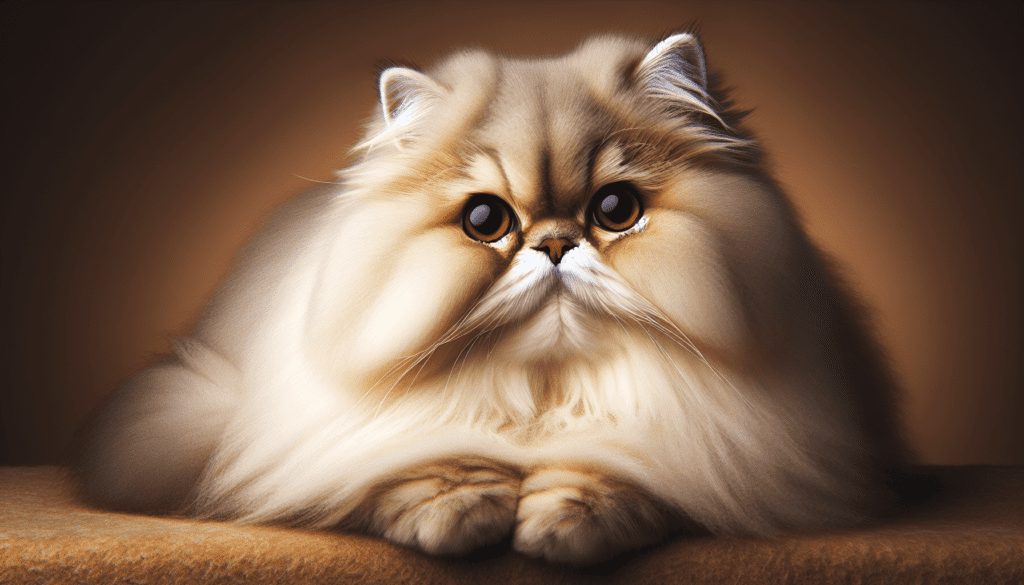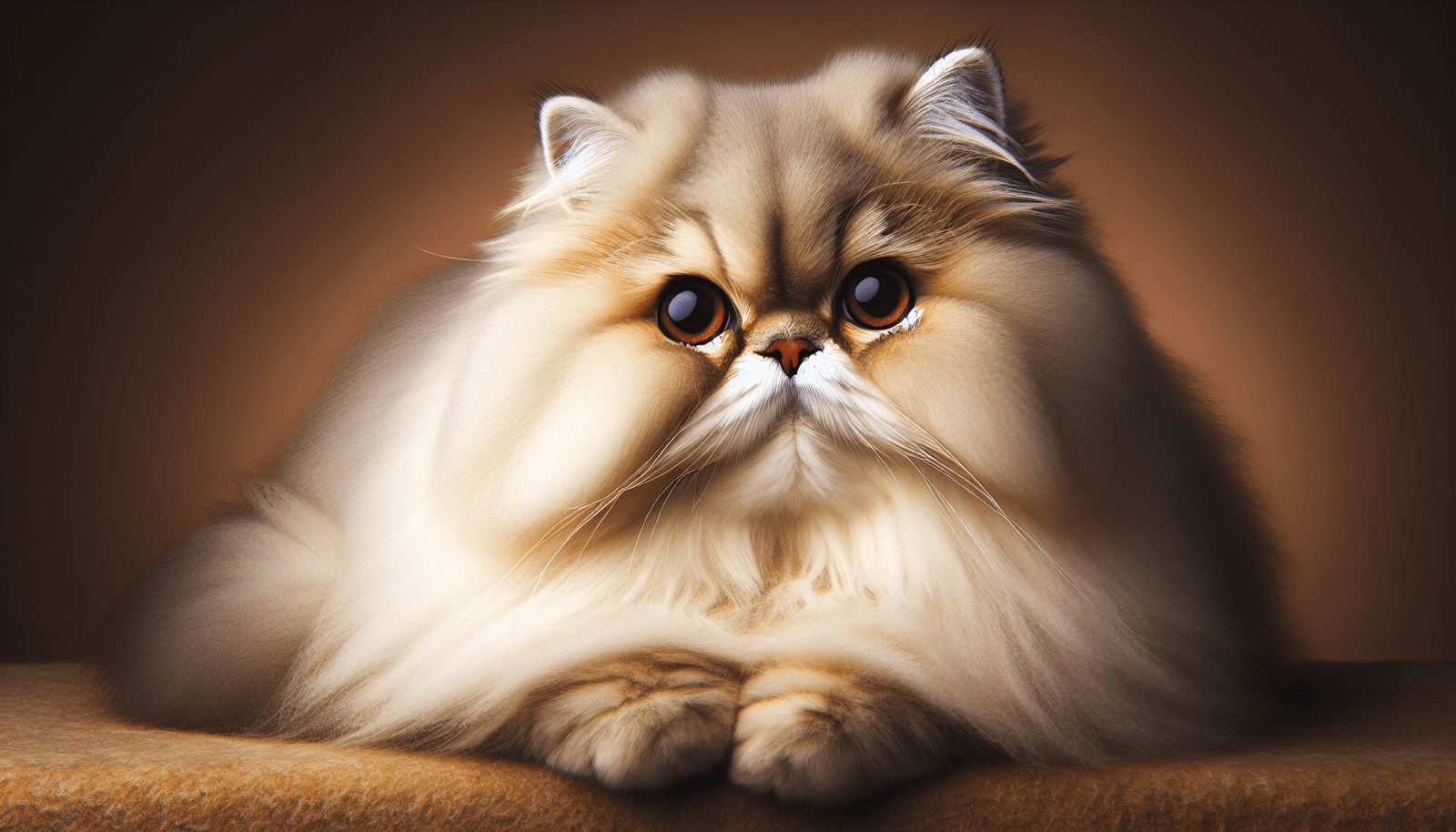Are you curious about the wonderful world of Persian cats? Look no further! In this article, we will explore the top 10 notable characteristics that make Persian cats so unique and special. From their luxurious coat to their calm and gentle temperament, these feline beauties have a lot to offer. So, grab a cup of tea and get ready to discover the fascinating world of Persian cats!

Physical Appearance
Distinctive face structure
One of the most notable characteristics of a Persian cat is its distinctive face structure. Persians have a unique facial structure characterized by a flat face and a short, broad nose. This feature gives them an adorable and distinctive appearance, setting them apart from other cat breeds.
Fluffy coat
The Persian cat is known for its luxurious and fluffy coat. Their fur is long and dense, with a soft texture that feels like silk when touched. Their coats come in a wide range of colors and patterns, including solid, tortoiseshell, tabby, and more. This beautiful coat adds to their charm and makes them irresistible to pet lovers.
Short legs
Persian cats have short legs, which further adds to their adorable appearance. These short legs give them a unique and teddy bear-like look that is loved by many. However, it’s worth noting that their short legs do not affect their mobility or agility, as they are still able to move around and explore their surroundings with ease.
Large round eyes
Another striking feature of Persian cats is their large, round eyes. Their eyes are expressive and captivating, often described as jewel-like. Persian cats have a sweet and innocent gaze, which adds to their overall charm. Their eyes come in various colors, including blue, green, copper, or odd-colored, making each Persian cat’s eyes unique.
Temperament
Calm and gentle
Persian cats are generally known for their calm and gentle demeanor. They have a relaxed and serene nature, making them a perfect companion for individuals seeking a peaceful and stress-free environment. Their tranquil temperament makes them great pets for families with children or older individuals looking for a furry friend to provide comfort and companionship.
Reserved and independent
While Persian cats are known to be affectionate, they also have a reserved and independent side. They enjoy having their personal space and require some alone time to recharge. This independent nature should be respected, as they may not always be in the mood for cuddles or playtime. However, once they feel comfortable and trust their human companions, they will shower them with love and affection.
Affectionate and loyal
Despite their independent nature, Persian cats are incredibly affectionate and loyal to their owners. Once they form a bond with their human family, they become devoted and loving companions. They enjoy being pampered with gentle strokes and cuddles, and their affectionate nature makes them perfect lap cats. Persians thrive on the companionship of their humans and will always be by their side, providing comfort and emotional support.
Maintenance
Regular grooming needs
The Persian cat’s beautiful long coat requires regular grooming to keep it in pristine condition. Their fur is prone to matting and tangling, so daily brushing is essential to prevent these issues. Regular grooming sessions also help to remove loose hair and minimize shedding, keeping the coat healthy and free from knots. Along with brushing, occasional bathing and nail trimming should be a part of their grooming routine to ensure they remain clean and comfortable.
Potential health issues
Persian cats are prone to certain genetic health conditions, and potential owners should be aware of these before bringing one home. Some common health issues that can affect Persians include respiratory problems, eye conditions such as tear duct blockages or excessive tearing, dental disease, and polycystic kidney disease. It is important to work closely with a reputable breeder and a trusted veterinarian to ensure the health and well-being of a Persian cat throughout its life.
Sensitive to extreme temperatures
Due to their unique coat and facial structure, Persian cats can be sensitive to extreme temperatures. They are not well-suited for hot or humid climates, as they can easily overheat. Similarly, they should be protected from cold drafts and low temperatures, as they are more susceptible to respiratory issues. Providing a well-regulated indoor environment with comfortable temperatures is crucial for their overall well-being.
Playfulness
Less active compared to other breeds
While Persian cats enjoy playtime, they are generally less active compared to some other cat breeds. They have a more relaxed and laid-back nature, preferring to spend their time lounging or observing their surroundings. However, this doesn’t mean they don’t enjoy playtime or interactive activities. Engaging them in occasional play sessions with toys and interactive games can keep them mentally stimulated and entertained.
Enjoy interactive toys
Persian cats may not be as energetically playful as some other breeds, but they still enjoy the excitement of play with interactive toys. Toys that stimulate their hunting instincts, such as feather wands or puzzle toys filled with treats, can provide mental stimulation and keep them entertained. It’s important to offer a variety of toys and rotate them regularly to prevent boredom and ensure their playtime remains enjoyable.
Prone to obesity if not exercised adequately
As Persian cats are generally less active, they have a tendency to become overweight if not exercised adequately. Obesity can lead to various health problems and reduce their overall quality of life. Encouraging regular light exercise, such as gentle play sessions or supervised indoor exploration, can help them maintain a healthy weight and prevent obesity-related issues. Providing appropriate portioned meals and a balanced diet is also crucial for their overall well-being.

Socialization
May take time to warm up to strangers
Persian cats have a reserved nature and may take some time to warm up to strangers. They need a calm and patient approach when meeting new people, as sudden or forceful interactions can cause them stress. It’s important to allow them to adjust at their own pace and provide a safe space where they can retreat if they feel overwhelmed. Once a Persian cat feels comfortable and secure, they can form deep bonds with their human companions.
Get along well with other pets if introduced properly
While Persian cats can be initially reserved with strangers, they usually get along well with other pets if introduced properly. Slow and gradual introductions, along with supervised interactions, can help them establish positive relationships with other animals in the household. It’s important to provide them with space to retreat if needed and monitor any interactions to ensure the well-being of both the Persian cat and the other pets.
Need human companionship
Although Persian cats can be independent at times, they still have a strong need for human companionship. They thrive in an environment where they receive love, attention, and interaction from their human family members. Regular human interaction and playtime are important to prevent them from feeling lonely or bored. If left alone for extended periods, they may become stressed or develop behavioral issues. Therefore, it’s essential to provide them with the companionship they require to lead a happy and fulfilling life.
Vocalization
Quiet and melodious voice
Persian cats are known for their quiet and melodious voices. Unlike some other breeds that are more vocal, Persians have a softer and more gentle vocalization. Their meows are often sweet and pleasant to the ears, adding to their overall charm. However, it’s worth noting that each Persian cat has its own unique voice, and some may be more talkative than others.
Expressive through purring and chirping sounds
While Persian cats may not be very vocal, they are expressive in other ways, particularly through purring and chirping sounds. When content and relaxed, they often purr softly, indicating their happiness and satisfaction. Chirping sounds are also commonly heard when they are excited or trying to communicate with their human companions. These sounds serve as a charming form of communication and help strengthen the bond between the Persian cat and its owner.
Not very vocal compared to some other breeds
In comparison to some other breeds known for their vocal nature, Persian cats are generally not very vocal. They tend to communicate more through body language, such as gentle nudges, soft eye contact, or affectionate gestures. This quiet nature makes them an ideal choice for individuals seeking a peaceful and serene living environment without constant noise.
Intelligence
Quick learners
Contrary to their calm and serene appearance, Persian cats are quick learners. They are intelligent and can easily pick up on routines and basic commands with proper training and positive reinforcement. Persians enjoy engaging their minds and can successfully learn tricks and respond to their names. Their intelligence makes them highly trainable and adaptable to various living environments.
Respond well to training
Persian cats are receptive to training and respond well to positive reinforcement techniques. They appreciate praise, treats, and play as rewards for their good behavior. With consistent and patient training, they can understand and follow simple commands. Training sessions can also help to keep them mentally stimulated and prevent boredom.
Enjoy puzzle toys and interactive games
To further stimulate their intelligence and keep them engaged, Persian cats enjoy puzzle toys and interactive games. These activities provide mental stimulation and challenge their problem-solving abilities. Puzzle toys that require them to figure out how to obtain treats or rewards are particularly enjoyable for Persian cats. Engaging them in interactive games with their human companions can also strengthen their bonds and provide them with much-needed mental exercise.
Adaptability
Can adjust well to different living environments
Persian cats are known for their adaptability and can adjust well to different living environments. Whether they live in a small apartment or a spacious house, they can thrive as long as their basic needs are met. However, it’s important to create a calm and stress-free environment for them, as they can be sensitive to changes or disruptions in their routine.
Tolerate being left alone for moderate periods of time
While Persian cats crave human companionship, they are generally tolerant of being left alone for moderate periods of time. They can entertain themselves with toys and enjoy their own company. However, it’s essential to ensure that they have access to food, water, a clean litter box, and a comfortable space to rest while their owners are away. If left alone for longer periods, they may start feeling lonely or anxious, which can lead to behavioral issues.
Require a calm and quiet space
Persian cats thrive in calm and quiet environments. They are sensitive to loud noises, disruptions, and chaotic surroundings. It’s important to create a peaceful space for them, ensuring they have a place to retreat when they need some solitude. This calm environment will help them feel safe, happy, and content in their surroundings.
Health and Longevity
Prone to certain genetic health conditions
Persian cats are prone to certain genetic health conditions, which potential owners should be aware of. Breathing difficulties, such as brachycephalic airway syndrome, can be a concern due to their distinctive facial structure. Additionally, eye conditions such as corneal ulcers or entropion, which is the inward rolling of the eyelids, can also occur. Regular veterinary check-ups and prompt attention to any signs of health issues are essential to ensure the well-being of Persian cats.
Require regular veterinary care
To maintain their health and longevity, Persian cats require regular veterinary care. This includes routine check-ups, vaccinations, dental care, and parasite prevention. Regular grooming sessions are also important to keep their coats healthy and free from matting. Adequate nutrition and a balanced diet tailored to their specific needs are crucial for their overall well-being.
Average lifespan of 12-16 years
Persian cats have an average lifespan of 12 to 16 years, although some can live even longer with proper care. Due to their genetic predisposition to certain health conditions, regular monitoring and proactive care are necessary to ensure they live a long and healthy life. Providing a loving and nurturing environment, along with regular veterinary care and a balanced diet, can contribute to their well-being and extend their lifespan.
Popularity and History
One of the oldest cat breeds
The Persian cat is one of the oldest and most beloved cat breeds in the world. Its origins can be traced back to ancient Persia (modern-day Iran), where it was treasured for its beauty and elegance. Throughout history, Persians were highly regarded and kept as cherished companions by nobles and royalty. Their timeless charm and stunning appearance have made them a popular choice among cat lovers for centuries.
Recognized and adored globally
Today, Persian cats are recognized and adored globally for their unique and captivating characteristics. Their striking appearance, calm temperament, and affectionate nature have made them one of the most sought-after breeds. Whether in homes, cat shows, or on social media, their beauty and charm continue to captivate cat enthusiasts worldwide.
Featured in various forms of media
Persian cats have also made appearances in various forms of media. They have been featured in movies, TV shows, books, and even works of art, further solidifying their cultural significance. Their regal and photogenic qualities make them perfect subjects for photographers and artists, and their portrayal in popular culture has only enhanced their widespread popularity and fame.

